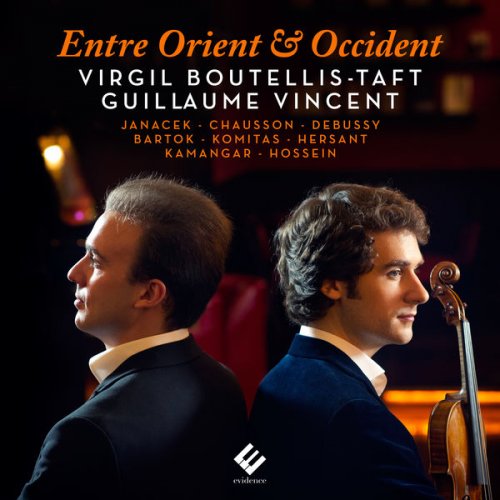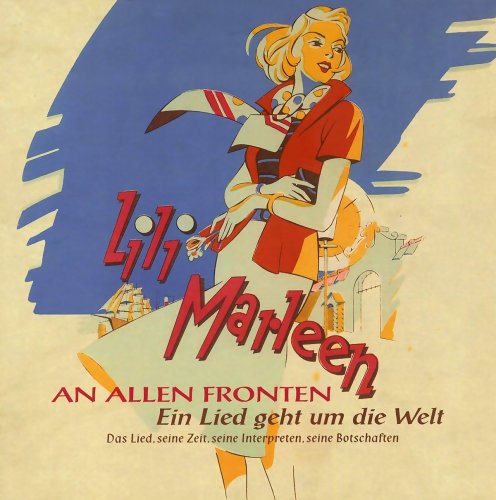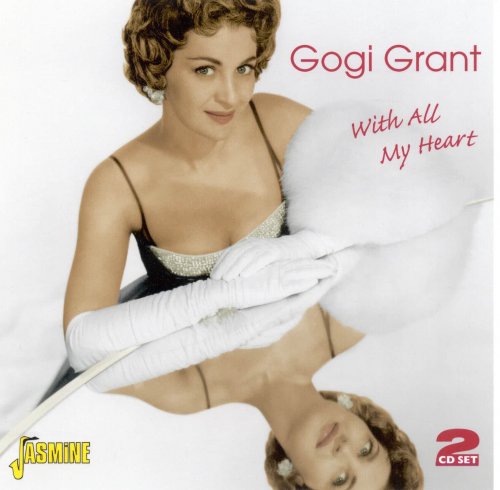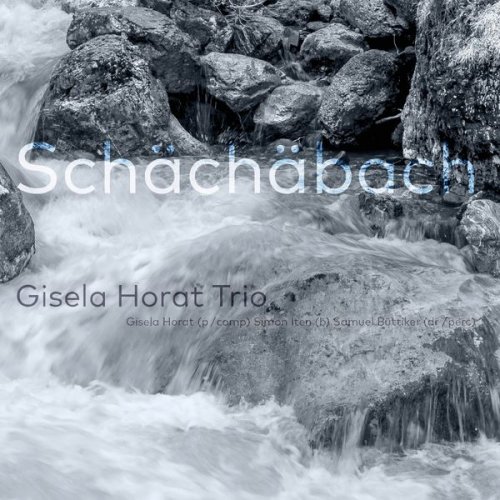Virgil Boutellis-Taft, Guillaume Vincent - Entre Orient & Occident (2016)

Artist: Virgil Boutellis-Taft, Guillaume Vincent
Title: Entre Orient & Occident
Year Of Release: 2016
Label: Evidence
Genre: Classical
Quality: flac lossless
Total Time: 01:17:58
Total Size: 329 mb
WebSite: Album Preview
TracklistTitle: Entre Orient & Occident
Year Of Release: 2016
Label: Evidence
Genre: Classical
Quality: flac lossless
Total Time: 01:17:58
Total Size: 329 mb
WebSite: Album Preview
---------
01. Gdung
02. Poème, Op. 25
03. Violin Sonata in A Flat Minor, JW VII/7: I. Con moto
04. Violin Sonata in A Flat Minor, JW VII/7: II. Ballada
05. Violin Sonata in A Flat Minor, JW VII/7: III. Allegretto
06. Violin Sonata in A Flat Minor, JW VII/7: IV. Adagio
07. Caravane (Arr. Tara Kamangar)
08. Once There Was and Once There Wasn't (Dedicated to Virgil Boutellis-Taft)
09. Chants du Sud, Six Short Pieces for Solo Violin: I. 1er chant
10. Chants du Sud, Six Short Pieces for Solo Violin: II. 2ème chant
11. Chants du Sud, Six Short Pieces for Solo Violin: III. 3ème chant
12. Chants du Sud, Six Short Pieces for Solo Violin: IV. 4ème chant
13. Chants du Sud, Six Short Pieces for Solo Violin: V. 5ème chant
14. Chants du Sud, Six Short Pieces for Solo Violin: VI. 6ème chant
15. Six danses roumaines, Sz. 56: I. Joc cu bata (Allegro moderato)
16. Six danses roumaines, Sz. 56: II. Braul (Allegro)
17. Six danses roumaines, Sz. 56: III. Pê-loc (Andante)
18. Six danses roumaines, Sz. 56: IV. Buciumeana (Moderato)
19. Six danses roumaines, Sz. 56: V. Poarga romaneasca (Allegro)
20. Six danses roumaines, Sz. 56: VI. Maruntel (Allegro)
21. Violon Sonata in G Minor, L. 148: I. Allegro vivo
22. Violon Sonata in G Minor, L. 148: II. Intermède
23. Violon Sonata in G Minor, L. 148: III. Finale
French violinist Virgil Boutellis-Taft returns to Carnegie Hall to present his new album Entre Occident et Orient (Evidence Classics/Harmonia Mundi) with the French pianist Guillaume Vincent. Composer Paul Cantelon (The Diving Bell and the Butterfly, The Other Boleyn Girl, New York I Love You…) joins Virgil to premiere his new work, dedicated to the violinist.
Western music has roots that reach far deeper than its geographical boundaries thanks to the gradual accumulation of oral folk traditions. Formal music, that is to say liturgical music or music of the court, bears the imprint of Byzantine traditions as well as those stemming from Arabic, Turkish and Persian influences. All of these factors contributed to the progressive development of a common European musical language, which explores and exploits the resources of polyphony, while the Eastern tradition deploys those of monophony and rhythm.
Attraction for the East is an essential leitmotiv throughout the history of Europe, from its ties to Byzantium as well as to Islam, particularly during the Crusades, down to the Ottoman Empire and its vassal states and finally through to the opening of direct trade routes between Europe and the Far East.
In the Baroque and Classical period, “yearning for the East” manifested itself in expressions of exoticism, or a taste for the bizarre, the fantastical and the picturesque that infused all artistic domains, especially those of literature and the arts (and music for example Les Paladins, Les Indes galantes...). is desire developed even further during the Romantic period when the connections between Europe and the Far East expanded rapidly.
Hi-Res version

![Eumir Deodato - Inútil Paisagem (As Maiores Composições de Antonio Carlos Jobim) [Bonus Track] (2025) Eumir Deodato - Inútil Paisagem (As Maiores Composições de Antonio Carlos Jobim) [Bonus Track] (2025)](https://img.israbox.com/img/2025-12/26/rc26x4ckfzr1mxaswj8nxutzu.jpg)



![The Eddie Higgins Trio, Nicki Parrott & Massimo Farao' - WINTER JAZZ SELECTION - Jazz at home (2023) [Hi-Res] The Eddie Higgins Trio, Nicki Parrott & Massimo Farao' - WINTER JAZZ SELECTION - Jazz at home (2023) [Hi-Res]](https://www.dibpic.com/uploads/posts/2025-12/1766736943_jah500.jpg)
![Bárbara Callejas & Giovanni Cultrera - Sesiones En Vivo Quinteto (2025) [Hi-Res] Bárbara Callejas & Giovanni Cultrera - Sesiones En Vivo Quinteto (2025) [Hi-Res]](https://www.dibpic.com/uploads/posts/2025-12/1766740203_dh7dkl6rvri9t_600.jpg)

